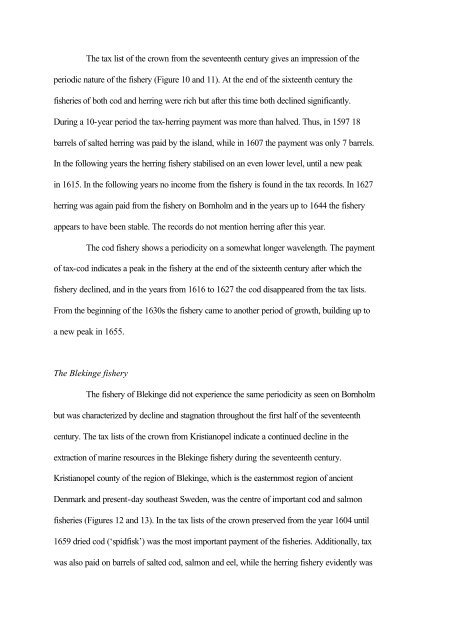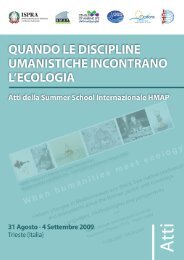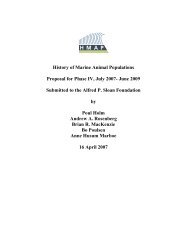The Danish fisheries c.1450-1800. Medieval and early modern ...
The Danish fisheries c.1450-1800. Medieval and early modern ...
The Danish fisheries c.1450-1800. Medieval and early modern ...
You also want an ePaper? Increase the reach of your titles
YUMPU automatically turns print PDFs into web optimized ePapers that Google loves.
<strong>The</strong> tax list of the crown from the seventeenth century gives an impression of the<br />
periodic nature of the fishery (Figure 10 <strong>and</strong> 11). At the end of the sixteenth century the<br />
<strong>fisheries</strong> of both cod <strong>and</strong> herring were rich but after this time both declined significantly.<br />
During a 10-year period the tax-herring payment was more than halved. Thus, in 1597 18<br />
barrels of salted herring was paid by the isl<strong>and</strong>, while in 1607 the payment was only 7 barrels.<br />
In the following years the herring fishery stabilised on an even lower level, until a new peak<br />
in 1615. In the following years no income from the fishery is found in the tax records. In 1627<br />
herring was again paid from the fishery on Bornholm <strong>and</strong> in the years up to 1644 the fishery<br />
appears to have been stable. <strong>The</strong> records do not mention herring after this year.<br />
<strong>The</strong> cod fishery shows a periodicity on a somewhat longer wavelength. <strong>The</strong> payment<br />
of tax-cod indicates a peak in the fishery at the end of the sixteenth century after which the<br />
fishery declined, <strong>and</strong> in the years from 1616 to 1627 the cod disappeared from the tax lists.<br />
From the beginning of the 1630s the fishery came to another period of growth, building up to<br />
a new peak in 1655.<br />
<strong>The</strong> Blekinge fishery<br />
<strong>The</strong> fishery of Blekinge did not experience the same periodicity as seen on Bornholm<br />
but was characterized by decline <strong>and</strong> stagnation throughout the first half of the seventeenth<br />
century. <strong>The</strong> tax lists of the crown from Kristianopel indicate a continued decline in the<br />
extraction of marine resources in the Blekinge fishery during the seventeenth century.<br />
Kristianopel county of the region of Blekinge, which is the easternmost region of ancient<br />
Denmark <strong>and</strong> present-day southeast Sweden, was the centre of important cod <strong>and</strong> salmon<br />
<strong>fisheries</strong> (Figures 12 <strong>and</strong> 13). In the tax lists of the crown preserved from the year 1604 until<br />
1659 dried cod (‘spidfisk’) was the most important payment of the <strong>fisheries</strong>. Additionally, tax<br />
was also paid on barrels of salted cod, salmon <strong>and</strong> eel, while the herring fishery evidently was






